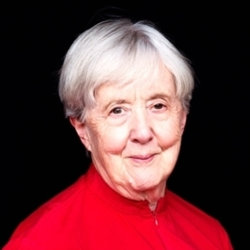Exposing the Hidden Hand
August 6, 2020
Clive Hamiltons new book Hidden Hand: “Exposing How the Chinese Communist Party is Reshaping the World” is a diatribe. We do not need this hysteria when we are trying to maintain a modicum of practical relations with the Peoples Republic of China.
The book, published last month by Hardie Grant, was positively reviewed in Australian Outlook, but in my view should not be taken seriously because it is biased, and therefore bad scholarship.
Few people nowadays admit that the pen is mightier than the sword, but sometimes a book becomes a best-seller because it rides on the back of a wave of popular sentiment. In that case, the book can also fan public opinion or even shape the direction of public policy. This was what happened with Clive Hamiltons 2018 book Silent Invasion: Chinas Influence in Australia. Hamilton, until then best known for writing on the environment and climate change, profited from fairly widespread paranoia about Chinese investment and a growing ethnic Chinese presence in Australia, including migrants, tourists and students, and his book, although panned by academic reviewers, sold well and created opportunities for the author to travel the world as a public speaker, garnering more support for an anti-China movement that is now inextricably linked with US President Donald Trumps re-election campaign.
Co-authored with Marieke Ohlberg, a Berlin-based researcher, Hidden Hand makes its focus clear from page one: The Chinese Communist Party is determined to transform the international order, to shape the world in its own image. The rest of the book assembles case studies demonstrating Chinese attempts to reshape the world from Europe and America as well as Australia. It claims that the Chinese Communist Party (CCP) works overtly and covertly through political elites, businesses and the Chinese diaspora to overturn democratic structures and bring the world under its domination. The tools the CCP uses, according to Hamilton and Ohlberg, include espionage, the media and soft power, as well as monopolisation of global institutions.
The authors have been very thorough in investigating CCP covert activities. Since they have a conspiracy theory, it was easy to find evidence. Many of the cases cited are indeed true. (The best conspiracy theories build on a modicum of fact.) The trouble with their argument is that a good few of the facts cited in this book have more than one possible interpretation, while the bias already established at the outset leads the authors to select just what supports their theory.
Let me take one example from the many instances in the book, selected from a discipline that I know best cultural diplomacy. It concerns the Shen Yun dance troupe, which is a propaganda arm of the international religious and political organisation known as Falun Gong. Chinese embassies and consulates around the world have protested about Shen Yun performances to relevant local authorities, on the grounds that the Falun Gongs ultimate aim is to destroy the CCP and the Chinese government. Surely this is fair enough grounds for any diplomatic envoy to make a complaint! Hamilton and Ohlberg (pages 198-200) detail several instances of such representations between 2008 and 2019 and fail to mention the reasons for the diplomats concern. Instead they use emotive language to describe, for instance, a 2019 request by the Chinese ambassador to Spain that Shen Yun shows in Madrid be cancelled as one of the most blatant, Beijing-inspired acts of cultural censorship seen to date.
The treatment of this case is typical and indicate rather basic lack of understanding of Chinas political structures. The authors consistently conflate the CCP and the government of the PRC. As Kerry Brown has noted recently, there is a widespread misunderstanding of the essential nature of the Party and its role in Chinese society, leading to it frequently being labelled evil in press reports, as it is in this book. There is also general misunderstanding of the CCP United Front and its role both within China and overseas. Mobo Gao has dealt with this in a recent post, pointing out how it works to promote the Partys objective of reunification with Taiwan, not to overthrow foreign governments. Hamilton and Ohlberg gloss over this and wrap it up as simply a tool of the CCP to achieve its goal of world domination.
Readers who would like to understand more about the Chinese social and political systems and their strengths and weaknesses are recommended to read the collection of articles by contributors to this blogsite published on line by the Australia China Relations Institute of the University of Technology Sydney. It helps to understand something of modern Chinese history. Recalling the former days of colonial humiliation, most Chinese people are proud of the achievements of their government and keen to gain respect from foreigners. In less than one lifetime, the country has emerged from poverty to become a major economic power and as a result it is increasingly enmeshed in the world economy and active in international organisations. The Chinese governments international goals are not however expansionist. It does not seek to revive the empire or turn other countries into vassal states, as Hamilton believes.
The position of the Chinese diaspora in Australia is made particularly difficult by insinuations that they are vulnerable to manipulation by PRC agencies and forced to take sides. It is sad that many now hesitate to write or speak about the state of Australia-China relations for fear of being labelled stooges. As one colleague has expressed it in recent correspondence to me, The phantom of the enemy or friend Maoist rhetoric has been evoked and running wild in the West. I hope Hamiltons book does not contribute to this dilemma.
